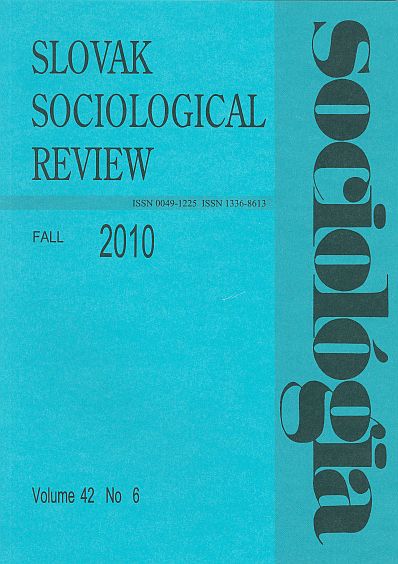Ako porovnávať stredné hodnoty latentných premenných medzi krajinami a „výskumnými vlnami“: Testovanie merania invariantnosti na príklade východoeuróp
How to Compare Means of Latent Variables across Countries and Waves: Testing for Invariance Measurement. An Application Using Eastern European Societi
Author(s): Mircea ComșaSubject(s): Social Sciences
Published by: SAV - Slovenská akadémia vied - Sociologický ústav
Keywords: measurement invariance; multiple-group confirmatory factor analysis; sexual permissiveness scale; structural equation modelling; AMOS
Summary/Abstract: How to Compare Means of Latent Variables across Countries and Waves: Testing for Invariance Measurement. An Application Using Eastern European Societies. Comparative social survey research is exponentially growing, more and more data being available at longitudinal and cross-national levels. When unobservable concepts are involved, the analysis of this kind of data poses the issue of measurement invariance (Are the concepts equivalent across countries and longitudinally?). The aim of this paper is to draw a clear picture of measurement invariance (MI) test via multiple-group confirmatory factor analysis (MGCFA) using AMOS 16 software. According to the literature this is a necessary step before latent mean comparison. First, I discuss the concept of measurement invariance, and then we present the most important features and issues related to the MGCFA. The main part of the paper is dedicated to presenting a step by step procedure to test for MI using AMOS VB.NET. In order to facilitate understanding, all steps are logically described; also, data and syntaxes are provided. To illustrate the procedure, I analyze the “sexual permissiveness”, as it measured in two large-scale surveys (EVS and WVS). I focus on the case of those 19 former communist countries included in these surveys, for which the available measurement covers at least three points in time, during the 1990-2009 period. To measure the “sexual permissiveness”, four items are used: how justifiable are homosexuality, prostitution, abortion, and divorce. Scalar invariance of “sexual permissiveness” scale is proved for most countries, so means and relationships involving this value can be meaningfully interpreted. Finally, we discuss some alternatives for presenting the means of latent variables. Sociológia 2010, Vol. 42 (No. 6: 639-669)
Journal: Sociológia - Slovak Sociological Review
- Issue Year: 42/2010
- Issue No: 6
- Page Range: 639-669
- Page Count: 31
- Language: English

